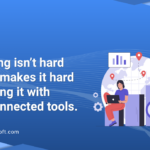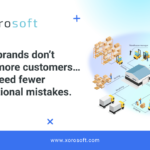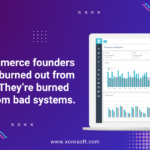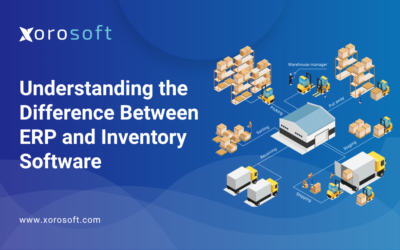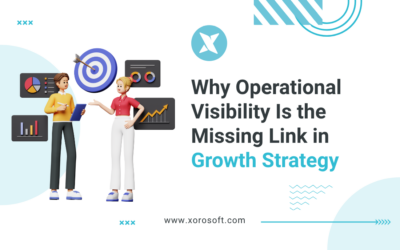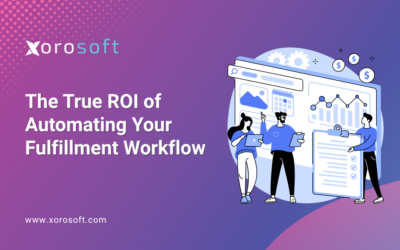
As a business owner or manager, you are constantly looking for ways to streamline your operations, increase efficiency, and improve your bottom line. One powerful tool that can help you achieve these goals is an Enterprise Resource Planning (ERP) system. In this article, we will explore the benefits of seamless ERP system integration and how it can maximize your return on investment (ROI).
Understanding ERP Systems and Their Role in Businesses
Before we delve into the benefits of seamless ERP system integration, it is important to understand what an ERP system is and how it functions within a business. An ERP system is a comprehensive software solution that integrates various aspects of a company’s operations, including finance, human resources, inventory management, manufacturing, and customer relationship management.
The primary purpose of an ERP system is to provide a centralized platform where all business information can be stored, accessed, and analyzed. This allows for real-time visibility into the company’s operations, enabling better decision-making, improved collaboration, and increased efficiency.
The Benefits of Seamless ERP System Integration
Seamless integration of an ERP system into your business can bring a multitude of benefits. One of the key advantages is improved data accuracy and consistency. With all information stored in a central database, there is no need for manual data entry or redundant data sources. This reduces the risk of errors and ensures that everyone in the organization has access to the most up-to-date and accurate information.
Another benefit is increased efficiency and productivity. By automating manual processes and streamlining workflows, an ERP system eliminates time-consuming tasks and allows employees to focus on more value-added activities. This can result in significant time savings and improved productivity across the organization.
Furthermore, seamless ERP system integration enables better collaboration and communication within the company. With all departments sharing a common platform, information can be easily shared, and cross-functional teams can work together more effectively. This leads to improved decision-making, faster response times, and ultimately, better customer service.
Key Features of an Effective ERP Solution
When selecting an ERP solution for your business, it is important to consider the key features that will best meet your needs. Some of the essential features to look for include:
- Scalability: Ensure that the ERP system can grow with your business and accommodate increasing data volumes and user requirements.
- Customizability: Look for an ERP solution that can be easily customized to fit your specific business processes and requirements.
- Integration Capabilities: Choose an ERP system that can seamlessly integrate with your existing software applications, such as accounting or inventory management systems.
- Reporting and Analytics: A robust reporting and analytics module is crucial for gaining insights into your business performance and making informed decisions.
- Mobile Accessibility: In today’s mobile-driven world, it is essential to have an ERP system that can be accessed and used on mobile devices, enabling remote work and real-time data access.
By carefully considering these features, you can choose an ERP solution that aligns with your business goals and maximizes the benefits of seamless integration.
Exploring the Xorosoft ERP System and Its Capabilities
Xorosoft ERP is a leading ERP solution that offers a wide range of features and capabilities to help businesses optimize their operations. Some of the key modules and functionalities of Xorosoft ERP include:
- Finance and Accounting: Manage all financial transactions, generate accurate financial statements, and streamline accounts receivable and payable processes.
- Inventory Management: Track and control inventory levels, optimize stock levels, and automate replenishment processes.
- Manufacturing: Streamline production processes, manage bills of materials, track work orders, and improve production planning and scheduling.
- Sales and Customer Relationship Management: Manage sales orders, track customer interactions, and improve customer service and satisfaction.
- Human Resources: Automate HR processes, manage employee information, track performance, and streamline payroll and benefits administration.
With its comprehensive functionality and seamless integration capabilities, Xorosoft ERP is an ideal choice for businesses looking to maximize their ROI through efficient ERP system integration.
Best Practices for Integrating an ERP System into Your Business
While implementing an ERP system can bring significant benefits, it is important to follow best practices to ensure a successful integration. Here are some key tips to consider:
- Define Clear Objectives: Clearly define your business objectives and what you hope to achieve through ERP system integration. This will help guide the implementation process and ensure alignment with your goals.
- Get Buy-In from Stakeholders: Involve key stakeholders from different departments in the decision-making process and ensure their buy-in. This will facilitate smooth adoption and collaboration.
- Train and Educate Employees: Provide thorough training and ongoing support to employees to ensure they understand how to use the ERP system effectively. This will maximize user adoption and productivity.
- Data Migration and Cleansing: Invest time and effort in migrating and cleansing your data before integrating it into the ERP system. This will help avoid data quality issues and ensure accurate reporting.
- Continuous Improvement: ERP system integration is an ongoing process. Regularly review and assess your operations to identify areas for improvement and optimize your use of the ERP system.
Following these best practices will help ensure a successful integration and enable you to maximize the benefits of seamless ERP system integration.
The Future of ERP Systems and Their Impact on Business Operations
As technology continues to evolve, so does the future of ERP systems. The rise of cloud computing, artificial intelligence, and machine learning is revolutionizing the capabilities of ERP solutions. In the future, ERP systems will become even more intelligent and predictive, enabling businesses to make data-driven decisions and automate routine tasks.
Cloud-based ERP systems will also become more prevalent, offering businesses greater flexibility, scalability, and cost-effectiveness. With the ability to access data and collaborate from anywhere, businesses will be able to operate more efficiently and adapt to changing market conditions.
Overall, the future of ERP systems holds great promise for businesses, providing them with the tools they need to stay competitive and thrive in a rapidly changing business landscape.
Maximizing ROI through Efficient ERP System Integration
The ultimate goal of seamless ERP system integration is to maximize your return on investment. By implementing an ERP system that meets your business needs, integrating it seamlessly into your operations, and optimizing its use, you can achieve significant cost savings, increased productivity, improved decision-making, and enhanced customer satisfaction.
To truly maximize your ROI, it is crucial to select the right ERP system for your business needs. Take the time to evaluate different options, consider your unique requirements, and choose a solution that aligns with your goals and objectives.
Choosing the Right ERP System for Your Business Needs
Choosing the right ERP system for your business can be a daunting task, given the numerous options available in the market. To help you make an informed decision, consider the following factors:
- Industry-Specific Functionality: Look for an ERP solution that offers industry-specific features and capabilities. This will ensure that the system is tailored to your unique business requirements.
- Vendor Reputation and Support: Research the reputation and track record of ERP vendors. Look for a vendor that has a proven track record, offers excellent customer support, and provides regular software updates and enhancements.
- Total Cost of Ownership: Consider the total cost of ownership, including licensing fees, implementation costs, maintenance, and ongoing support. Ensure that the ERP system fits within your budget and provides a good return on investment.
- Scalability and Future Growth: Choose an ERP system that can scale with your business and accommodate future growth. This will prevent the need for costly system upgrades or replacements down the line.
By carefully considering these factors and conducting thorough research, you can choose the right ERP system that will drive your business forward and maximize your ROI.
Conclusion: The Importance of Seamless ERP System Integration for Business Success
In today’s fast-paced business environment, seamless ERP system integration is no longer a luxury but a necessity. By implementing an ERP system that integrates all aspects of your business operations, you can achieve improved efficiency, increased productivity, better decision-making, and ultimately, business success.
Whether you are a small startup or a large enterprise, the benefits of seamless ERP system integration are undeniable. It enables you to streamline your operations, gain real-time insights into your business performance, and stay competitive in an ever-changing marketplace.
So, take the first step towards maximizing your ROI by exploring the capabilities of Xorosoft ERP and booking a demo today.


